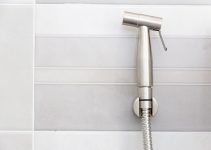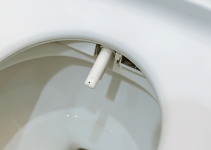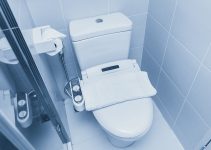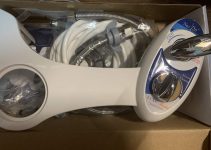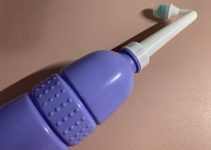Taking a shower with low water pressure is a torture. Using a bidet with low water pressure is not a great thing to expect. The bidet can’t wash away all the debris, increasing the risks of infections and the cost of toilet paper. Luckily, we find an array of ways to increase bidet water pressure too low.
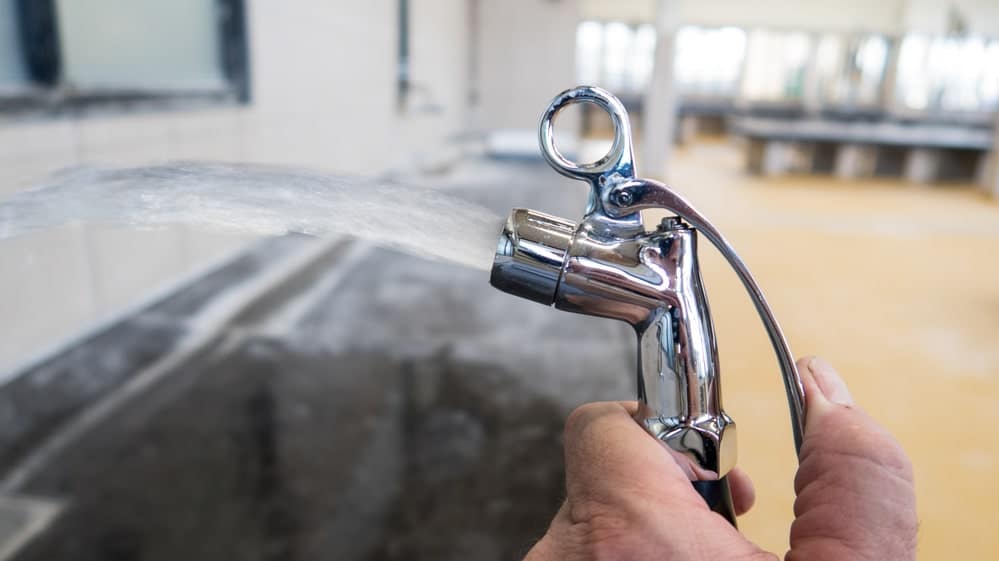
Instead of hiring a pro, you can increase the water pressure in the easiest way possible by following our instructions.
What causes the low bidet water pressure?
The reasons why bidet water pressure is too low vary. The wrong pressure settings, clogged water filter, and dirty nozzles could play a role. The leak pipes and closed shutoff valves could also affect the water pressure negatively. Sometimes, it could be a problem in your whole area.
It is also possible due to your preference, especially recently switching from bidet attachment to electric.
We could solve these problems quickly in the section below.
How to increase bidet water pressure?
As we said, the issue of low bidet water pressure could be from the outside or inside. Rest assured, we can figure them out one by one.
1. Is there any water failure in your area?
Water failure is not common these days, but it does happen a few times a year. Talk to your neighbor and ask if they experience low water pressure.
If yes, you could wait for the water pressure to recover. Then you could use the bidet as it is.
2. Check the water pressure regulator
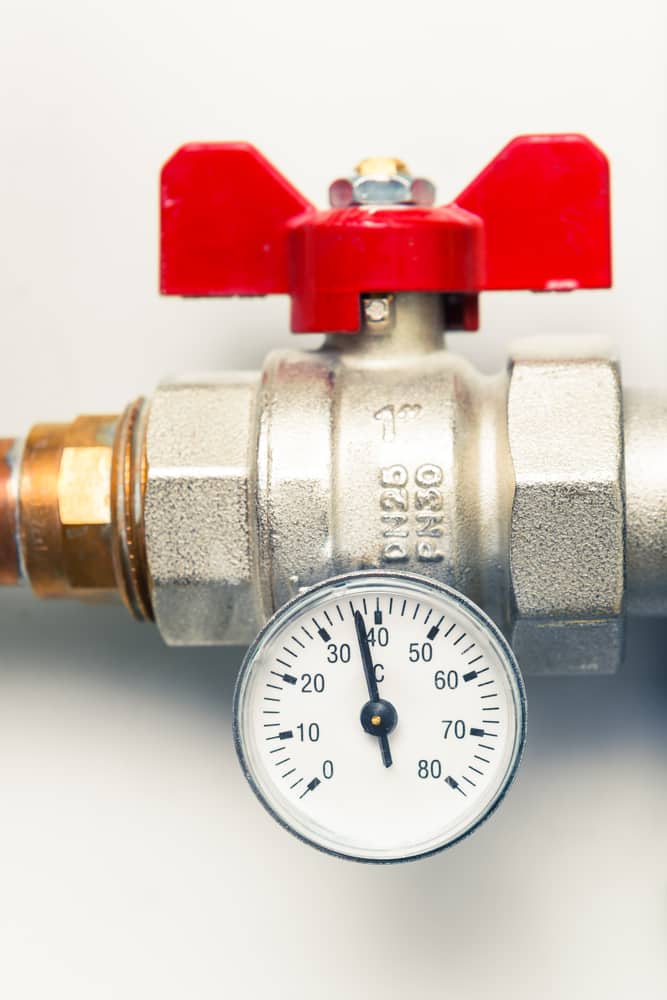
A water pressure regulator is used to stabilize the water pressure in your home. You can turn it clockwise to raise the water pressure or counterclockwise to lower the water pressure.
Your house’s water pressure may be high enough to fulfill the requirement of your other facilities but not your new bidet. In this case, you can increase the water pressure a bit to let the bidet work.
A broken water pressure regulator will also cause low pressure, and you should replace it with a new one. You can test it by opening the sink’s faucet to see if the water pressure becomes low at the same time.
3. Check for clogged pipes
Clogged pipes are not an uncommon issue for those who live in a relatively old house. The particles, sands, and rust could block the pipe over time. It will slow down the water flow gradually, and at some point, it leads to a low pressure that you can’t bear.
You may need to unclog or replace the piping. Ask a professional plumber to fix this problem if you don’t know how to.
4. Are there any leaks?
Any leaks in the pipes that run to the bidet could lead to low water pressure. We often find leaks in the bidet hose attached to the T-valve.
It is also common to see leaks in the hot water hose connected to the sink. A simple way to identify this problem is to check if there is any moisture leaving on the ground or wrap the hose with some tissue to see if they will get wet.
If it is the case, replacing a new hose can do the trick, and the water pressure will increase immediately.
5. Open the shutoff valve
You may turn off the shutoff valve when installing the bidet, or the shutoff valve is partially closed before since your toilet doesn’t need too much water pressure.
To increase the bidet water pressure, you could turn the shutoff valve counterclockwise to make it fully open.
6. Open the T-connector
The T-valve works to divert water flow to the toilet and the bidet. There is a lever to control the water supply to the bidet for those who installed an adjustable T-valve.
If it is partially closed, the water supply to the bidet will decrease, resulting in low water pressure. You can fix it with a breeze by turning the lever.
7. Check the power source and water temperature if you have an electric bidet seat
Electric bidet toilet seats may not work correctly when the power source or the water temperature can’t meet the requirement.
When the water is too cold, or the power source can’t provide enough electric voltage, the output water pressure of the bidet will become low.
If you live in an icy area, your best bet may be using a different type of bidet, such as a non-electric bidet seat or a bidet attachment.
8. Replace or remove the external water filter

A water filter is a great tool to sterilize the water and reduce hard water built-ups. It makes the bidet last longer and prevents risks of infections. However, it could reduce the water pressure somewhat.
On top of it, the water filter will become clogged over time, causing the bidet water pressure to become too low to support regular operation.
As you know, electric bidets control the output water pressure by electricity. Therefore the home’s water pressure doesn’t play a significant role. However, it could affect the pressure of bidet attachments and non-electric seats to a large extent because they directly use the home’s water pressure.
If you have used it with the bidet for a while, it is time to replace it with a new one. The expected lifespan of a bidet water filter is about six months. If it is your first time using an external filter and finding it lower the water pressure, you may need to remove it altogether.
As long as the tap water is clean, it would not cause too many problems. If the water quality is your primary concern, you could use an electric one instead of other types of bidets.
9. Change water pressure settings
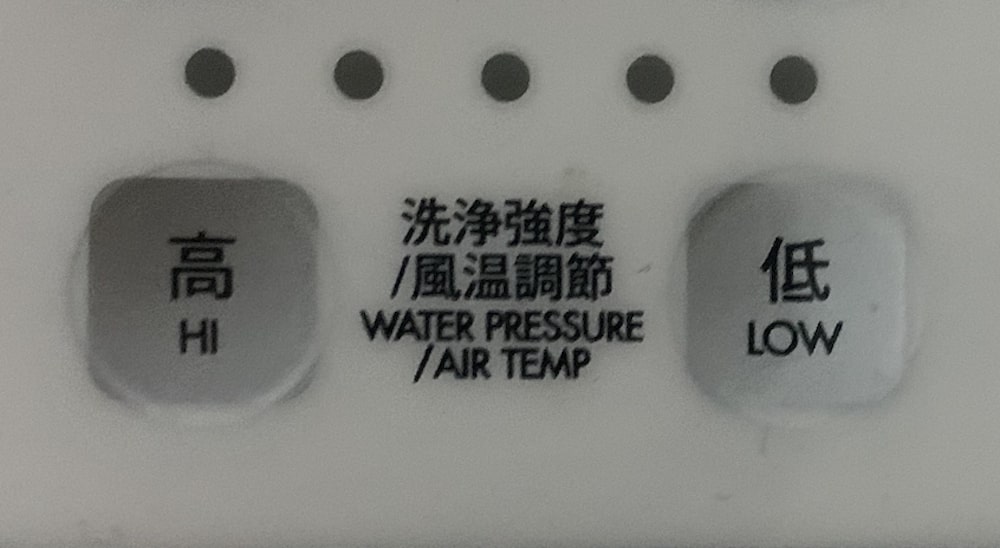
After checking all the possible causes outside the bidet, we should look at the bidet itself. The manufacturer often provides a few water pressure options for you to choose from, ranging from low to high.
You could choose the highest one to test if the water pressure is still too low for you. In case you are not familiar with these settings, the default water pressure setting is usually low, and you have to increase it if you enjoy a strong water stream.
Some advanced models have the feature of user preset, allowing it works as you want by storing your preferred water pressure.
10. Change spray modes
Different spray modes come with different water pressure. If you opt for a soft mode or feminine washing mode, the bidet water pressure tends to be low.
These modes have broader coverage and are great for taking care of your private parts. It is also a good option for people who are more sensitive to water pressure.
However, many people don’t like the weak water stream, and luckily, there are a few “strong” options available such as turbo wash and vortex mode. They have narrow spray and higher output pressure.
11. Clean the nozzles
The bidet wand can become clogged as well. This applies to both the bidet seat and handheld bidet sprayer.
The debris, sands, and other particles coming from your local tap water supply could clog the holes on the nozzles, making the water can’t go through quickly.
One way to reduce the chance of the happening is to install a water filter but to solve this problem, and you have to clean it regularly.
Even though most nozzles have a self-cleaning function, we still advise you manually clean it with some vinegar every so often. After removing these built-ups, the water pressure will increase to the average level.
12. Modify the nozzle positions
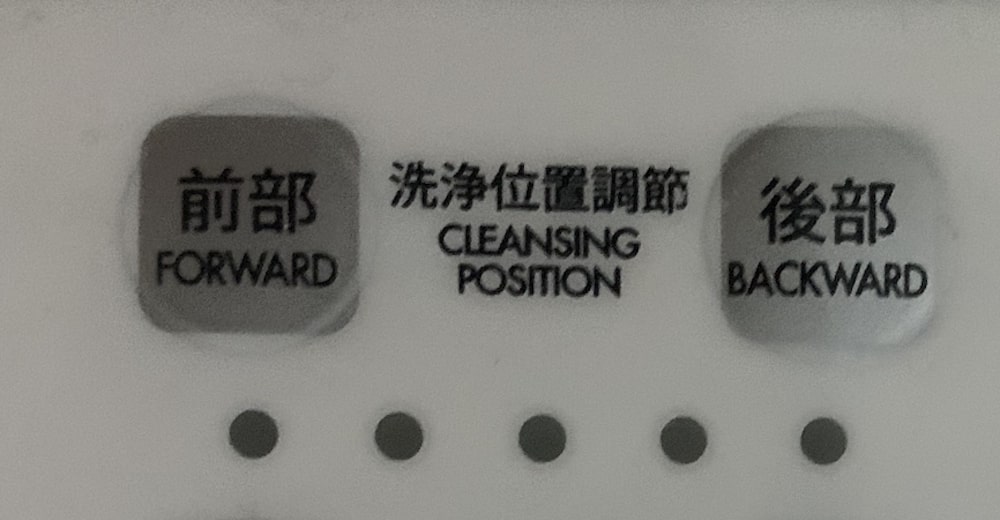
Bidets are designed to cater to the average people. Therefore, it is common that some people may feel the nozzle always misses the mark and the water stream is not powerful to wash away all the stool.
You could change the nozzle position in the remote control or the side panel so the water could hit the right place, and you may not think it is the issue of low water pressure again.
13. Clean the bidet mesh filter
A mesh filter inside the bidet but connected with the bidet hose to prevent particles. Less water will come into the bidet when clogged, resulting in lower water pressure.
To increase the pressure, you ought to clean or replace the mesh filter, and the procedure is a bit more complex than dealing with an external water filter.
The first thing is to turn off the shutoff valve, empty the tank water, and remove the bidet.
When the bidet is unattached from the toilet, you should use a needle-nose plier to take the mesh filter. Rinse the filter with water and use a toothbrush to brush away all the debris.
If you find the mesh filter too hard to clean up, installing a new filter can be sensible. The last step is to put everything back and test if the water pressure increases.
14. Adjust the sprayer nozzles
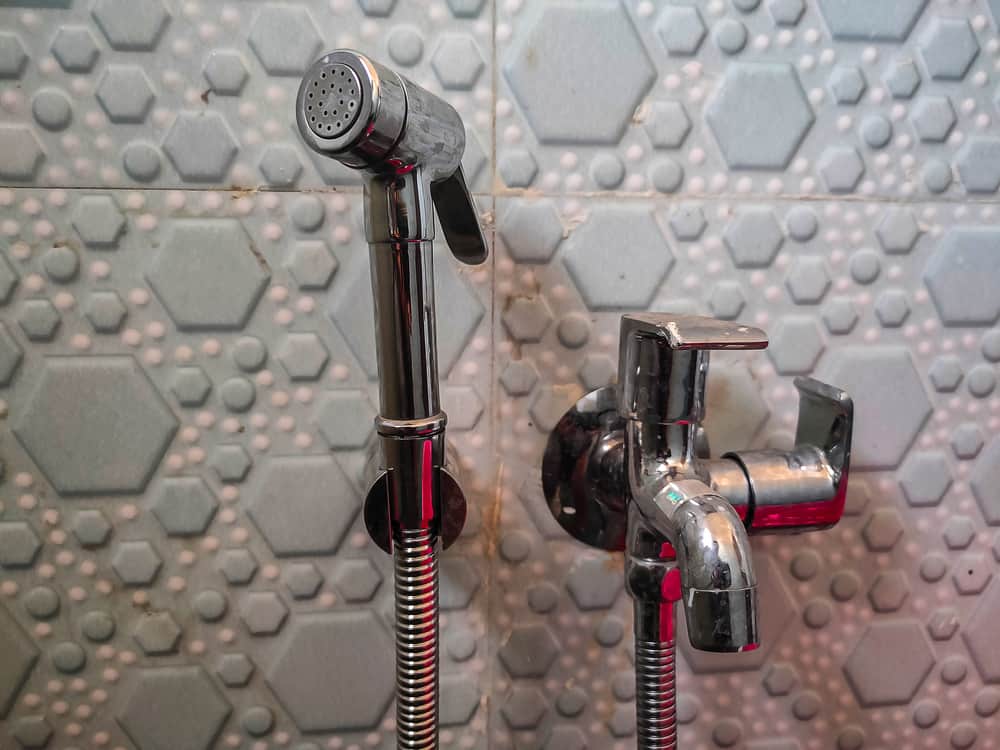
Some handheld bidet sprayers have an adjustable head, meaning that you can turn the head and increase the output pressure by using fewer spray holes. It is the same as using a showerhead.
When you feel the pressure is too low, see if you can change the spray pattern and narrow the water stream.
15. Check the output water pressure
Again, the right bidet water pressure is a matter of preference in some cases. Some models are designed for sensitive skin people, and others aren’t.
Some manufacturers don’t provide information about the output water pressure from the nozzles, and most customers don’t know this metric.
To know exactly what kind of water pressure you will get, you should check the information in the manual. When this metric is not available, you can talk to the manufacturer or retailer. The data is crucial while buying an electric bidet as the output pressure is controlled by a motor instead of the home’s water supply.
We also suggest you read reviews from the real customers carefully. Not only could you know the quality of this bidet, but whether they are satisfied with the water pressure or not. If you find several people complaining about the low water pressure, you may need to try something else.
16. Use a non-electric bidet
Non-electric bidets take advantage of the home’s water pressure directly. There is no internal filter, heater, or motor to affect the water pressure. Yes, they do have knobs for you to set the water pressure, but the maximum pressure they provide is higher than most electric counterparts.
Moreover, as we said, the electric ones may not work properly in a cold area, but it is not the case with the non-electric ones. Both attachment, sprayer, and non-electric seats are suitable choices for those who like a strong jet water stream.
However, these products don’t come with many features, and some don’t provide warm water, which could be a hassle for some users.
17. Use an electric bidet with higher pressure
We know how hard it is for you to give up the heated seat, warm water, and dryer embedded in an electric bidet even though the water pressure is too low for you.
The good news is you don’t have to switch to a non-electric bidet. Instead, you can look for an electric model with higher pressure settings. Therefore, you could continue to enjoy your luxury experience.
Except for checking the output pressure metric, you should also seek the model that has “hard wash mode,” “aerated water stream,” or “vortex wash.” These are good indicators of “higher water pressure.”
Moreover, you could know more details about the bidet by reading customer reviews. Pay attention to the complaints about the bidet water pressure. If many customers are not satisfied with pressure, you’d better stay away from this product.
18. Defective bidet?
A bidet can get tear and wear with time and may not function well as before. Sometimes, the motor can partially fail, and the nozzles can’t push enough water out. It is also possible that what you get at the beginning is defective.
Under these circumstances, you should contact the manufacturer and use your warranty if you still have one.
Conclusion
You have a lot of ways to increase the bidet water pressure when it is too low for you. You could adjust the shutoff valve, T-connector, and pressure regulator. Fixing the leaks is also helpful. The clogged filter internal and external could be the culprit as well.
Also, you should learn how to use a bidet correctly. The issue could be fixed easily by changing the pressure setting or spray modes in some cases.
If you really want a strong jet stream, then consider buying a non-electric bidet since it often comes with higher pressure.
